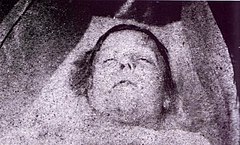Dark Star
Book Whore
I'm going crazy with all these books (thank you Morbid for letting me get my freak on with the Lit sections)....and loving it! Since this area is Crime in Literature. Let's focus on a "famous" criminal each week. Someone so famous, they've got their own book.
When I thought of this idea and then went on my journey of discovery, I found too many sick fucks. I read about crimes that I don't remember ever hearing of, and things that disturbed the shit out of me. Since the Dreamin'Demon is a Crime News Blog, what better subject to look into, heh? Killers who have committed heinous crimes and the authors who have written about them. Feel free to feature your own "famous criminal".Turn us all on to a new book; another adventure. Maybe one day some lucky bastard from the Demon Pages will become "famous" for their flagitious behavior and a book shall be written about them. (hopes the Imp reads this and gets the hint...she's such a good writer)
When I thought of this idea and then went on my journey of discovery, I found too many sick fucks. I read about crimes that I don't remember ever hearing of, and things that disturbed the shit out of me. Since the Dreamin'Demon is a Crime News Blog, what better subject to look into, heh? Killers who have committed heinous crimes and the authors who have written about them. Feel free to feature your own "famous criminal".Turn us all on to a new book; another adventure. Maybe one day some lucky bastard from the Demon Pages will become "famous" for their flagitious behavior and a book shall be written about them. (hopes the Imp reads this and gets the hint...she's such a good writer)




















